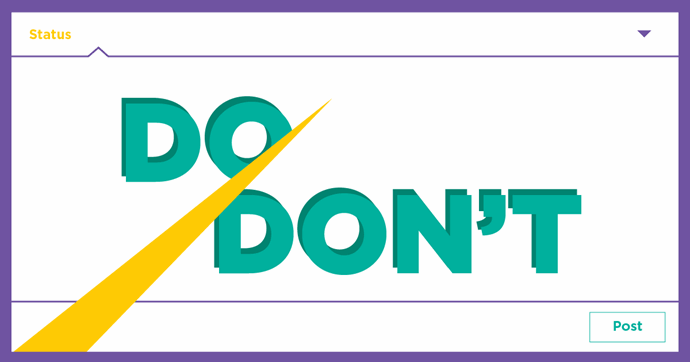 By Kumar Bhaya,
By Kumar Bhaya,
Vice President, Client Solutions, APAC
Employer brand – an organisation’s reputation among potential and current employees – is always important, but it takes on added significance during this time of such low unemployment. Being known as a great place to work, with a mission, values, culture, and personality that resonates with people is vital to finding and keeping great employees.
We’ve spoken with talent leaders from organisations across Asia about the factors most affecting how they forge and promote their employer brand. Here are some of the topics they’ve shared with us, along with some strategies you can use to turn these trends to your advantage:
1. Rising expectations of candidates: Talent has never been as empowered as it is today. The rise of the start-up culture encourages individuals to rethink their own career trajectories and expectations. Perks that are harder to come by at a larger organisation, such as being able to check in with the CEO multiple times a day, are now more common. How big is it getting? Statista reports that in Thailand, around 1 in 5 workers is involved in a start-up.
The rise of shared office space also has made a difference, shifting the mindset of talent to be more selective of where they work. Coworkingresources.org points to a 150% rise in shared spaces across India. This puts pressure on larger, corporate organisations that may have offices in locations that are less attractive or less convenient for travel.
What should you do?
Where people work and whom they work with is becoming increasingly important, so focus on telling stories from inside your organisation. Use 360-degree photos to showcase a nice space you may have or use videos to help people see what it will really be like within the business.
Relationships matter. If we can move from recruitment being a transaction and make it into an experience that helps connect talent to people within our business, more tactical challenges like office location may become less important.
2. The role of brands: In today’s world, computational trust is key. We have enough trust in the information we view online to make what we feel is an informed decision. We might buy a piece of furniture, sight unseen, based on the reviews of others. Or we could decide to stay in a complete stranger’s house via AirBnB based purely on reviews from other strangers who have stayed in the house. Equally, the adoption of voice-activated search continues to grow (77% in China in 2018). In an environment such as this, where we may use just our voice to search on our phones for 'sales jobs Hong Kong', the role of brand could arguably be less important. People are just looking at whatever is at the top of the search list, right? Then again, brand could play an even more critical role. It can put your organisation front of mind so that people will search for sales jobs with your company in Hong Kong.
What should you do?
Regardless of how you view the importance of brands, it’s clear that their role in our lives is changing. To stay ahead, consider strategies surrounding:
- Data – Use analytics and research to truly understand your talent market and their employment drivers, which channels and what tactics work best so that your approach can become increasingly predictive and accurate.
- Innovation – Just as a restaurant may need to innovate by using an online delivery service, we as recruiters and talent marketers need to continue to think creatively about how we engage with talent to differentiate our brand. It’s not just about using WeChat, it’s about using specific channels in ways that truly differentiate your brand and add value to the candidate experience.
- Value – Ensure that your approaches to marketing and nurturing talent provide value. For example, if you are looking to hire digital talent like web developers or social media managers, get one of your developers to write about their current projects. Have them detail the technology they used and how the projects will impact the business.
3. The convergence of marketing and recruiting: Reaching candidates in APAC today requires a healthy mix of talent acquisition and marketing expertise. This means TA professionals must borrow, build, or buy skills such as social and content marketing, as well as data analysis so that they can treat candidates more like customers. The stakes are high, given that 54% of people who have a poor candidate experience with an organisation will go on to change their consumer behaviour with that brand.
What should you do?
Build a cross-functional team to carry out employer brand initiatives. Something that has typically been owned and managed by the people function (oftentimes more as a ‘hiring brand’ by TA) should shift to leverage the skillsets of the digital, marketing, and data teams. These teams already possess the technology and knowhow at a corporate level. Combine that with the expertise of talent professionals, and you have a potent mix. The result could be more powerful, and less expensive to achieve, than reskilling your current team and investing in new infrastructure. With the adoption of smarter technology and resultant data points, we will start to see a holistic view of brand emerging. It once again will feature a more centralised management model that will allow companies to better track and leverage people who interact with their brand. This creates a common, overall brand experience, whether they come in as a consumer, candidate, employee, or alumni.
4. Humans rising: For the last two years, there has been an intense focus on AI, robotics, automation, and basically anything machine-related. While systems and processes can be done with greater automation to create efficiency, as we say at Cielo, 'technology is only as good as the human experience it improves’.
We're also seeing increased activity around the ‘human’ side of experience. How do we make people happy and help them be the best versions of themselves at work? How do we better support the communities we serve, and how do we make businesses fundamentally more human?
Take, for example, the World Economic Forum, which predicts that problem solving and critical thinking skills will be more relevant for future workers than technical competencies. Stepping back, we see this trend at a macro country level, with 45% of the Thai population being considered ‘extremely stressed’ and the Happiness score in China being lower now than in 2018. This shows that countries racing to build individual wealth and status through their careers may be doing so at a cost. In response, countries like Japan are experimenting with a workweek that includes Mondays off. In South Korea, trendwatching reports that laptops must be shut down by a certain time.
What should you do?
This trend would suggest that talent across Asia will become increasingly interested in what companies will do to support their mental health or lifestyle choices. Think about generating and promoting stories, videos, infographics, or other types of content to showcase your organisation’s employee-focused programs (parental leave policies, wellness initiatives).
5. Employer brand perceptions outside Asia: An organisation’s consumer brand can sometimes be prestigious and powerful enough that it bolsters employer brand in Asia. But major brands in APAC may not enjoy the same recognition in other parts of the world. There could even be negative perceptions, such as it being harder for employees based in Europe, North America, or another remote location to achieve internal mobility. Companies looking to expand outside of Asia could face an uphill battle in appealing to these workers.
Brad Hall from Huawei, one of the top brands in China, shares a perfect example. With pay in the 90th percentile, Brad says the tech giant didn’t really struggle with talent acquisition. That's because Huawei’s immense brand power promised enough pay and prestige for employees to compensate for any possible uncertainties in other areas. Their value proposition allowed them to attract the very best talent.
However, outside of China, Huawei is less known when it comes to employer branding. The company suffered 40% attrition across Europe, which Brad attributes mainly to its inward facing culture and management style. So, they are working on creating region-specific employer brand and value propositions to align with local candidate expectations.
What should you do?
Localize your Employee Value Proposition (EVP) so that your organisation is attractive to candidates wherever they may be. Job seekers are more likely to apply when they feel the candidate experience is tailored to them, so organisations need to give their brand enough flexibility to allow local teams to customise the messaging, tools, and approaches for recruiting talent.
For example, DFS has had great hiring success by configuring their EVP to local markets. They have a core employer brand that is used consistently around the world, but they estimate 20% of the messaging and approach is localized, enabling consistency and a tailored experience.
'One of the key challenges for us to recruit in new markets is that there are varying degrees of awareness about DFS in the local talent pool,' said Irene Yip, Director of Global Talent Acquisition at DFS. 'Working closely with internal marketing and communications teams is critical so that we ensure our people and customers’ promises are clearly aligned and compelling to the audiences.'
6. Greater emphasis on diversity: Signalling the increasingly important role of diversity and inclusion, Ivan Zenovic, Director of Talent Acquisition, Asia, at global lifestyle apparel company VF, tells us that, ‘The company has just hired someone to drive the next phase of our award-winning diversity and inclusion commitment. In an interesting twist, this new hire has the job title of “Head of Inclusion & Diversity” to emphasise our philosophy that while diversity is important, our focus on building an inclusive culture first.’
Like Huawei, this points the importance of internal culture as the driving force behind real change. DFS has an equally rich story of diversity – mainly around gender --where they are targeting a 50/50 balance of females in leadership roles. To support this, DFS leverages stories from within the business to promote themselves as a destination employer, and they focus on proactive sourcing and shaping the right hiring experience.
What should you do?
The notion of diversity and inclusion is truly multi-faceted, and there is no single answer or intervention that ‘solves’ for it. It’s a journey, and every organisation will need to consider their own context and business strategy. The keys mainly involve developing a culture of inclusivity within the organisation, which can then be projected externally. Don’t think in terms of a ‘campaign’ but a mindset within the business about acceptance and respect for individuals so they can be the best version of themselves. The vibrant religious, cultural and demographic variety in Asia means that inclusion will be uniquely compelling in the coming years.
7. Seeking a purpose: Worldwide, more employees want to feel that their jobs have more meaning and benefit to society. This goes beyond the products and services a company might provide and includes the causes they believe in and activities they’re involved in that help others. But ideally, this would include what the company produces, e.g., a drink manufacturer that strives to be eco-friendly in its use of plastic and water.
What should you do?
As with EVP, you can localise a purpose for employees. Different areas of the globe, and even different areas of a country, will have purposes that resonate more strongly than others. One community might want to focus on fighting poverty while another might prioritise increasing literacy and education. Find what resonates with the employees in that region and link it to your employer brand. That way, your organisation becomes more than just a business making a product or providing a service. It becomes a force for good.
The state of employer branding continues to evolve in the APAC region for all organisations. Whether they are local start-ups or multinational conglomerates, they can take steps to make sure they stay on top of trends and make employer brand an effective part of their talent acquisition strategy.
Connect with Kumar Bhaya on LinkedIn.



